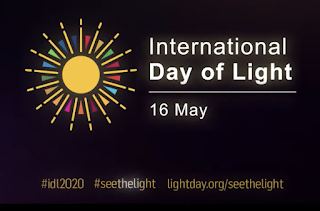In response to the new restrictions imposed by the U.S. Department of Commerce that target it specifically, Huawei issued a statement describing the move as a stranglehold without justification.
The full statement:
"Huawei categorically opposes the amendments made by the US Department of Commerce to its foreign direct product rule that target Huawei specifically.
The US government added Huawei to the Entity List on May 16, 2019 without justification. Since that time, and despite the fact that a number of key industrial and technological elements were made unavailable to us, we have remained committed to complying with all US government rules and regulations. At the same time, we have fulfilled our contractual obligations to customers and suppliers, and have survived and forged ahead against all odds.
Nevertheless, in its relentless pursuit to tighten its stranglehold on our company, the US government has decided to proceed and completely ignore the concerns of many companies and industry associations.
This decision was arbitrary and pernicious, and threatens to undermine the entire industry worldwide. This new rule will impact the expansion, maintenance, and continuous operations of networks worth hundreds of billions of dollars that we have rolled out in more than 170 countries.
It will also impact communications services for the more than 3 billion people who use Huawei products and services worldwide. To attack a leading company from another country, the US government has intentionally turned its back on the interests of Huawei’s customers and consumers. This goes against the US government’s claim that it is motivated by network security.
This decision by the US government does not just affect Huawei. It will have a serious impact on a wide number of global industries. In the long run, this will damage the trust and collaboration within the global semiconductor industry which many industries depend on, increasing conflict and loss within these industries.
The US is leveraging its own technological strengths to crush companies outside its own borders. This will only serve to undermine the trust international companies place in US technology and supply chains. Ultimately, this will harm US interests.
Huawei is undertaking a comprehensive examination of this new rule. We expect that our business will inevitably be affected. We will try all we can to seek a solution. We hope that our customers and suppliers will continue to stand with us and minimize the impact of this discriminatory rule."
http://huaweihub.com.au/media-statement-on-foreign-direct-product-rule-changes-made-by-us-government/
The full statement:
"Huawei categorically opposes the amendments made by the US Department of Commerce to its foreign direct product rule that target Huawei specifically.
The US government added Huawei to the Entity List on May 16, 2019 without justification. Since that time, and despite the fact that a number of key industrial and technological elements were made unavailable to us, we have remained committed to complying with all US government rules and regulations. At the same time, we have fulfilled our contractual obligations to customers and suppliers, and have survived and forged ahead against all odds.
Nevertheless, in its relentless pursuit to tighten its stranglehold on our company, the US government has decided to proceed and completely ignore the concerns of many companies and industry associations.
This decision was arbitrary and pernicious, and threatens to undermine the entire industry worldwide. This new rule will impact the expansion, maintenance, and continuous operations of networks worth hundreds of billions of dollars that we have rolled out in more than 170 countries.
It will also impact communications services for the more than 3 billion people who use Huawei products and services worldwide. To attack a leading company from another country, the US government has intentionally turned its back on the interests of Huawei’s customers and consumers. This goes against the US government’s claim that it is motivated by network security.
This decision by the US government does not just affect Huawei. It will have a serious impact on a wide number of global industries. In the long run, this will damage the trust and collaboration within the global semiconductor industry which many industries depend on, increasing conflict and loss within these industries.
The US is leveraging its own technological strengths to crush companies outside its own borders. This will only serve to undermine the trust international companies place in US technology and supply chains. Ultimately, this will harm US interests.
Huawei is undertaking a comprehensive examination of this new rule. We expect that our business will inevitably be affected. We will try all we can to seek a solution. We hope that our customers and suppliers will continue to stand with us and minimize the impact of this discriminatory rule."
http://huaweihub.com.au/media-statement-on-foreign-direct-product-rule-changes-made-by-us-government/






















